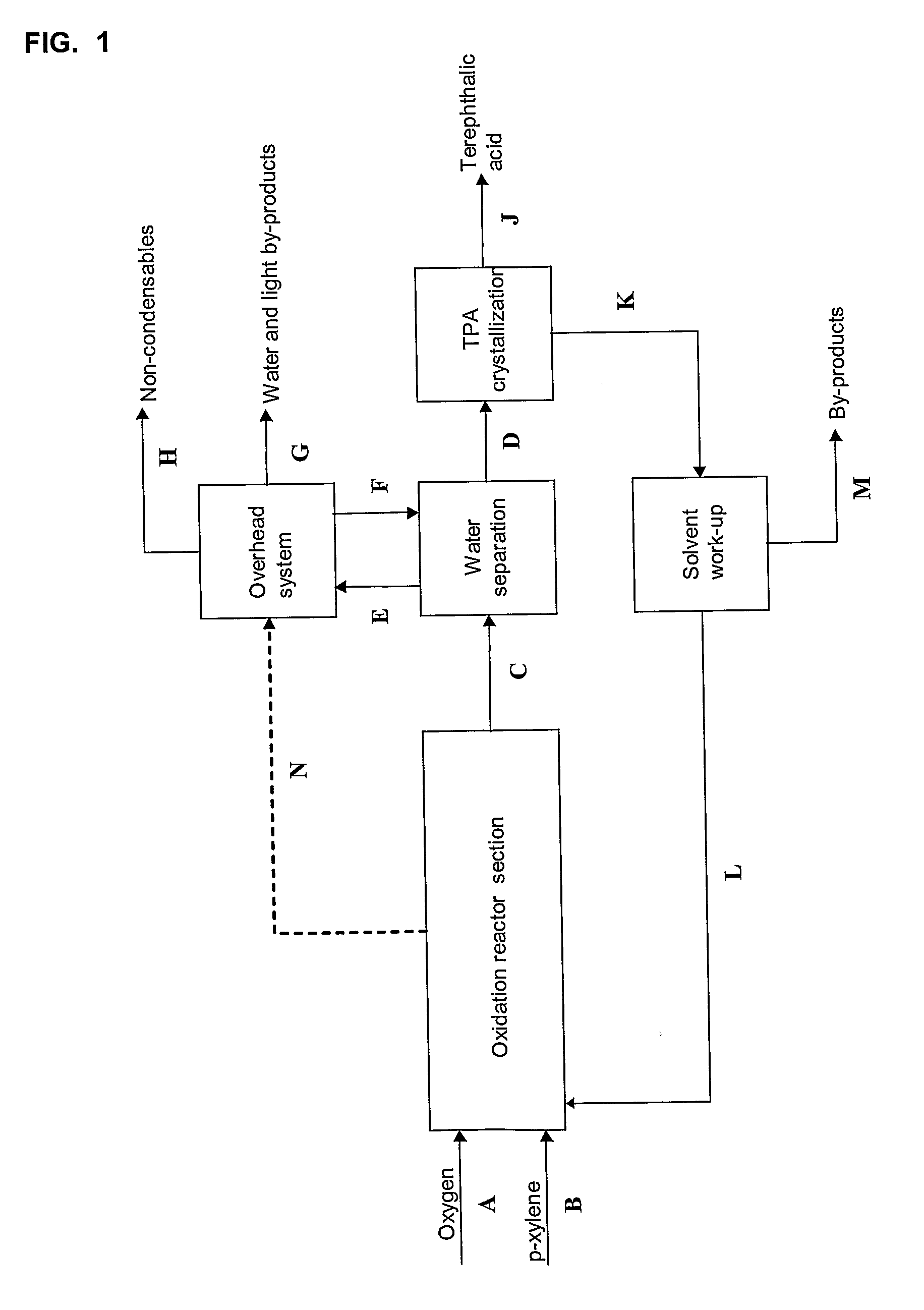Process for Preparing Aromatic Carboxylic Acids
a technology of aromatic carboxylic acid and process, which is applied in the preparation of carboxylic compounds, carboxylic preparation by oxidation, chemical industry, etc., can solve the problems of high cost of acetic acid recovery, high cost of solvent loss, and process typically conducted in expensive titanium-clad reactors
- Summary
- Abstract
- Description
- Claims
- Application Information
AI Technical Summary
Benefits of technology
Problems solved by technology
Method used
Image
Examples
example
[0064]A simplified flow sheet without any heat integration of a process according to the present invention with a p-xylene-water mixture used as solvent is shown in FIG. 2. The molar flow rates for the process in FIG. 2 are given in Table 1.
TABLE 1streamABCDEFGHTPAmol %0.060.330.600.861.111.111.350.07watermol %23.4723.8224.1524.4824.8024.8010.3710.50p-xylenemol %76.2775.3874.5173.6672.8372.8388.0889.22oxygenmol %0.050.160.260.370.460.460.060.06othersmol %0.140.310.470.630.790.790.150.15pressurebar5050505050161616temperature° C.240256271285300258193200total flowkmol / h2384124123244062468924971249712064720383streamIJKLMNOPTPAmol %0.060.000.000.000.000.000.000.00watermol %23.470.000.0029.1099.9234.549.7199.91p-xylenemol %76.270.00100.0069.260.0111.1690.060.01oxygenmol %0.0595.000.000.610.0120.760.070.01othersmol %0.145.000.001.030.0633.540.170.07pressurebar1650501633316temperature° C.1762020258100100100101total flowkmol / h238432727018702388349814321594streamQRSTUVWTPAmol %0.000.000.0099....
PUM
| Property | Measurement | Unit |
|---|---|---|
| weight ratio | aaaaa | aaaaa |
| weight ratio | aaaaa | aaaaa |
| temperature | aaaaa | aaaaa |
Abstract
Description
Claims
Application Information
 Login to View More
Login to View More - R&D
- Intellectual Property
- Life Sciences
- Materials
- Tech Scout
- Unparalleled Data Quality
- Higher Quality Content
- 60% Fewer Hallucinations
Browse by: Latest US Patents, China's latest patents, Technical Efficacy Thesaurus, Application Domain, Technology Topic, Popular Technical Reports.
© 2025 PatSnap. All rights reserved.Legal|Privacy policy|Modern Slavery Act Transparency Statement|Sitemap|About US| Contact US: help@patsnap.com



